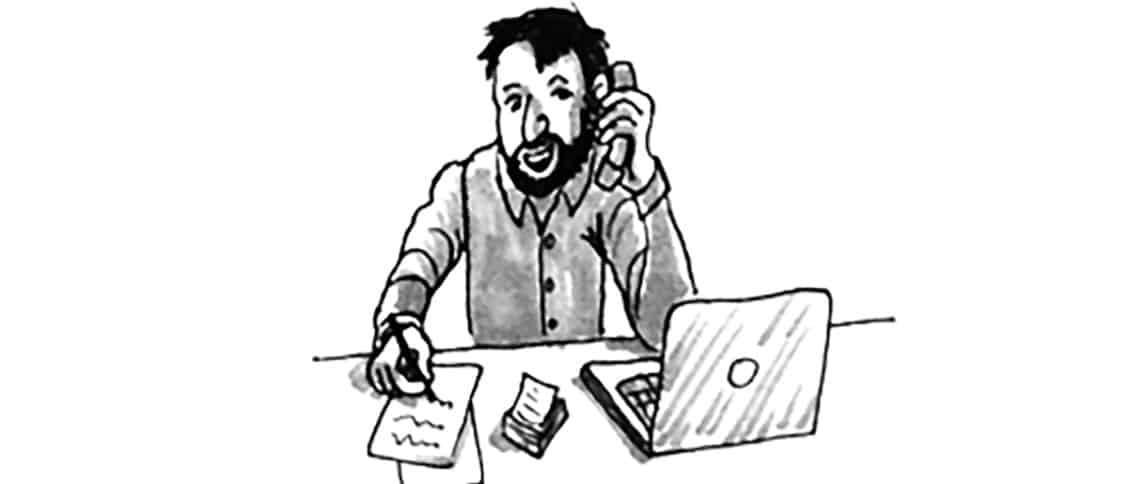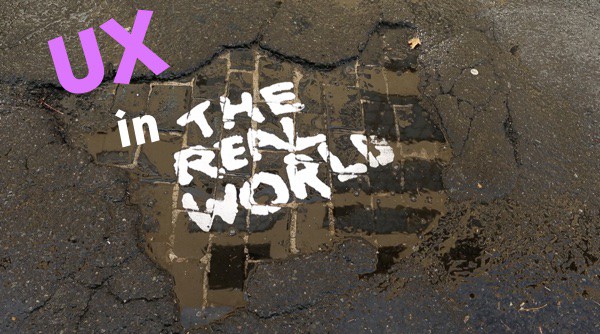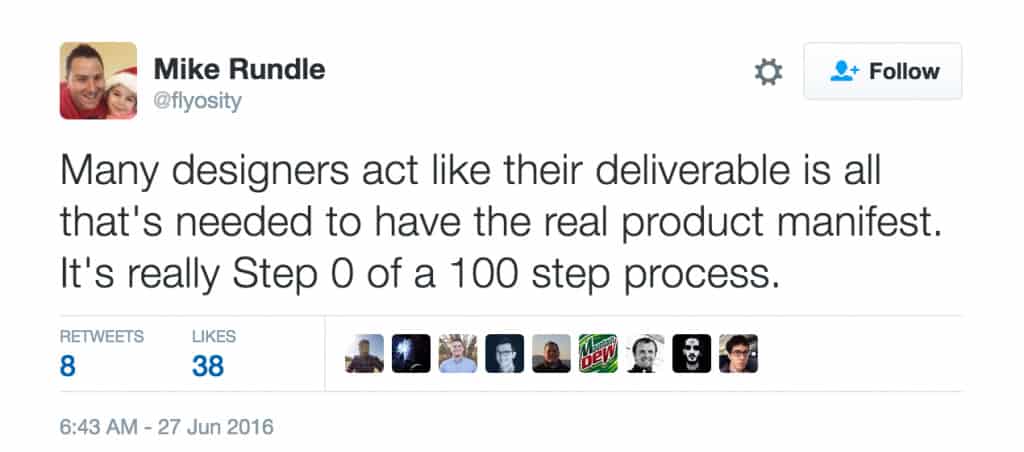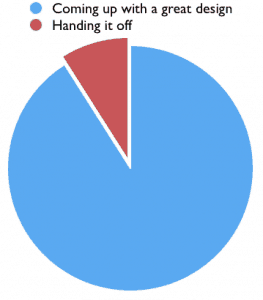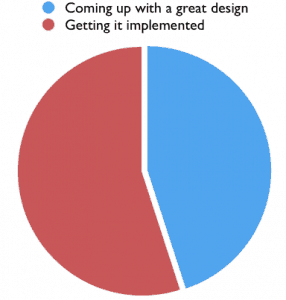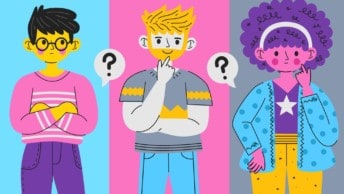We want to help you get the tools and advice you need to get started in UX, or take your career to the next level. Look out for more posts on this topic, and don’t forget to join the conversation in the forums!
Here you are, fresh from a UX education, armed with a full complement of design tools and techniques. These will undoubtedly help you in your career. But, when you arrive at your first UX job you’ll find conditions a little different than they were in the classroom. You’ll soon see that the skills that got you ahead in school aren’t the same as the skills you’ll need at the office.
The classroom vs. the real world
Processes in the real world
In the classroom the process is dictated, but in the real world it’s the result that’s emphasized, with less regard for how you get there.
For example, in school you might be assigned to perform a heuristic evaluation or design a low-fidelity prototype. But on the job you’ll be tasked with answering questions that can be approached a number of ways. It’s up to you to decide how to proceed.
Deliverables in the real world
In school, your deliverable is what you design. In the real world, it’s what ships to the customer that matters. There’s a big gap between those two and it takes a whole new set of skills to bridge it. More on this later in the post.
End goals in the real world
As a UX design student your goal is to design the best possible experience. In the real world, your ultimate goal is to help the company make money. Sometimes that comes from a great user experience, but other times it’s just doing whatever it takes to land a high-paying customer.
Assignments in the real world
The types of assignments you get in school are generally not the kind you get in the real world. In school, you were probably asked to design a brand new product or possibly redesign an existing one. But, as I mentioned above, when the main goal is profit, assignments usually involve adding new features to either get new customers or keep existing ones.
The trouble for UX designers is that adding new features often decreases the usability of a product. Your greatest, and most common, challenge will be to add features without negatively impacting usability.
Very rarely will you be asked to redesign an existing product solely to make it more usable. Redesigns only come about when an existing product can no longer accommodate new features (and thus needs to be redesigned so that it can).
“Doing the design isn’t the hard part…”
Before diving into how to succeed in the real world of UX, I’d like to share a story about real world UX challenges.
Take a look at this email sent from a UX designer at American Airlines, in response to a designer who criticized the AA.com website and offered up a redesign (emphasis mine).
The group running AA.com consists of at least 200 people spread out amongst many different groups, including, for example, QA, product planning, business analysis, code development, site operations, project planning, and user experience. We have a lot of people touching the site, and a lot more with their own vested interests in how it presents its content and functionality… AA.com is a huge corporate undertaking with a lot of tentacles that reach into a lot of interests…
Simply doing a home page redesign is a piece of cake. You want a redesign? I’ve got six of them in my archives. It only takes a few hours to put together a really good-looking one, as you demonstrated in your post. But doing the design isn’t the hard part, and I think that’s what a lot of outsiders don’t really get.
At another point he describes the design process as a “slog through endless review and approval cycles with their requisite revisions and re-reviews.”
Ugh.
Yet anyone who works in a large organization can identify with the cultural roadblocks like those described above. This should not deter you from your chosen career or lessen your enthusiasm.
The takeaway from this story is that Real World UX Success = Design + Delivery.
My own experience is similar. When I began my UX career I expected to spend my time roughly like this:
But what I learned is that, to be effective, it ends up looking more like this:
Read on for some strategies I learned that can help you avoid some rookie mistakes and act like a pro.
How to succeed in the real world
Many of the skills you’ll need to succeed as a UX designer in the real world are “soft skills.” Here are a few specific ones to help you get a leg up.
Tell a story, connect the dots
“Designers need to be able to articulate the value of a great user experience and frame design in the context of business goals.”
– Aarron Walter
Part of your job as a designer is to make a case for your work. Great designers need to know how to tell stories. Learn to talk in terms of how much happier users will be with your design. And to really knock it out of the park, work with the developers to craft a story about how the product can get from where it is to where you want it to go, so that they don’t feel left out of the process.
Small wins add up
At the end of the day (and your career, for that matter), you’ll be judged by what impact you had on the product, not what you designed in your cubicle. A fantastic design that never ships isn’t worth all that much in the real world.
A good way to get started is to focus on small wins. These serve two purposes:
- They have a better chance of making their way into the product.
- They build up a kind of credit history for you. This shows your colleagues and supervisors that you can get things done. In the real world that’s what makes you valuable.
Consistency is good example. Making things consistent across the UI is an easy case to make and it often simplifies the code. It’s not sexy, but it’s good for the product and the customer. And it’s hard to argue against.
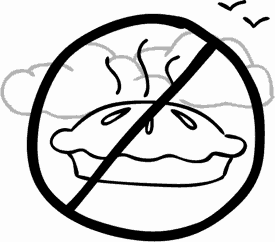
These small wins are like taking out a credit card just to show the banks that you can pay it off each month. Each time one of your ideas gets into the product, however small, it’s like paying off your monthly balance. Think evolution over revolution to keep your design rhythm going.
Know that you’re building up that credit for a reason. Just like when you’re ready to buy that first car. You’ve paid your bill every month for that moment when you’re ready to ask the bank for a lump of cash. The better your credit is, the more likely they’ll be to give it to you.
It’s the same with UX. You keep paying your bills, making small improvements without being uncompromising so that you can eventually put your foot down when it matters.
When that time comes, you’ll be able to say no to a feature or direction that you think is bad for the customer experience because people will trust your judgement and track record. That’s the long game.
Build relationships
“The graph of impact tends to correlate with how many people you need to work effectively with. Once I realized this, I started to see my interactions with other people differently. It was no longer about winning battles and proving that I was right, but about developing stronger collaborative relationships.”
– Julie Zhou
Finally, know that if you’re a pain in the ass to work with you won’t get a lot of traction in your job. A good designer is able to work with others and show them that they can make their jobs easier.
In addition to empathy for your users, you should also learn to understand the goals and points of view of your colleagues. You are all on the same team. Without a sales team to sell the product or a PM to get it out the door, you don’t have a job. Learn what matters to them and find common ground. Share the same end goals.
Go forth!
I hope this post has given you an idea of what to expect in your first UX job without discouraging you. UX designers are the difference between products that simply work and products that work simply. Remember to savor your victories along the way. You really do have the ability to make a difference for real people.

